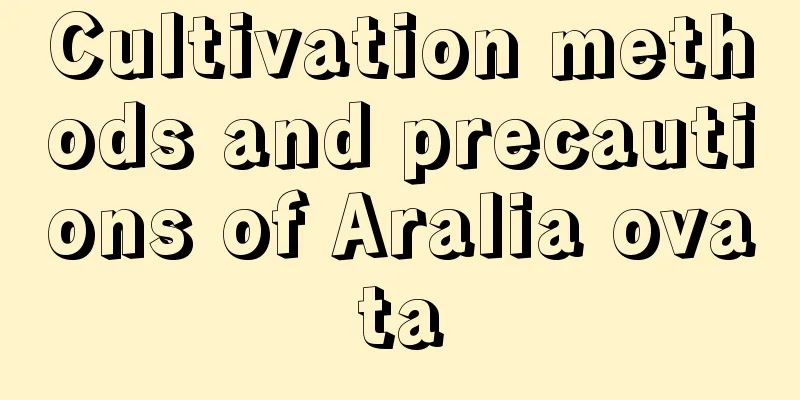Cultivation methods and precautions of Aralia ovata

How to grow Aralia ovataPot soil selectionDragon's Tooth Flower is a larger woody flower, so a larger flowerpot is needed for potted plants. The soil needs to be well-drained, fertile, and loose sandy loam. It does not require high fertility, but it cannot be too poor. Dragon's Tooth Flower will grow poorly in soil that is too poor or too dry. Light and temperatureDragon's Tooth Flower likes a growing environment with sufficient light. It can tolerate partial shade and it is best to give it about 5 hours of light a day. It likes warm climates, can withstand high temperatures, but has poor cold tolerance. The suitable temperature for the growth of Aralia dasyphylla is between 20℃ and 28℃. It needs to be kept warm in winter. If conditions permit, it can be placed in a greenhouse for the winter. Watering and fertilizingDragon Tooth Flower likes a humid environment, but not too waterlogged. Watering should be moderate. In the summer when the temperature is high and dry, watering should be increased to keep the soil moist. If necessary, you can spray water on the leaves. In the winter when the temperature is low, watering should be reduced, especially after being placed in the greenhouse. As for fertilization, you can apply fertilizer once every half a month during the growth period, and apply phosphorus and potassium fertilizers once or twice during the flowering period. After autumn, fertilization needs to be stopped. Precautions for the cultivation of AraliaRepottingAralia dasyphylla is a large plant that needs to be repotted as it grows. It is usually repotted every 2 to 3 years in the spring and can be combined with pruning. pruneThe dragon tooth flower can be pruned in spring, and the dead branches and long branches can be cut off to form more flower branches. Pruning can also be done in winter to ensure a better wintering. Pests and diseasesThe common diseases of Aralia dasyphylla are mainly root rot, wilt and anthracnose, and the common insect pests are mainly aphids and scale insects. If diseases occur, you can spray them with Bordeaux mixture or other pesticides to treat them. If pests occur, you can use pesticides or use more environmentally friendly homemade pesticides to kill the insects. |
<<: Cultivation methods and precautions of bulbous begonia
>>: The breeding methods and precautions of Yanlaihong
Recommend
What fertilizer is best for beans?
Fertilizing time for beans The growth cycle of be...
How to sow blue star flowers
Seed selection Selecting seeds before sowing is a...
Common Problems in Sowing Succulent Plants Snow Lotus
Preventing seeds from falling over when sowing sn...
How to save the flower when its leaves turn yellow
1. Suitable lighting When caring for flower plant...
What does sending chrysanthemums mean?
1. Flower Language Different chrysanthemums have ...
Is it profitable to grow green vegetables? What are the prospects and profits of growing green vegetables?
Is growing vegetables profitable? With the improv...
How long does it take for raindrops to sprout?
How long does it take for raindrops to germinate?...
Time and method of Hami melon pollination
Hami melon pollination method Hami melon is a ver...
Is camellia suitable for the bedroom?
1. Reasons for being suitable (1) Toxicity: It is...
Are hydrangeas poisonous?
1. Toxic Hydrangea contains toxic ingredients. Th...
Planet grafting method
The first step of planet grafting : raw material ...
The harm and effects of betel nut
The harm of betel nut Physiological hazards Frequ...
The Uses and Value of Cactus
use √It is rich in protein and vitamins needed by...
Diseases and Pests of Euphorbia milii and Their Control
Diseases of Euphorbia milii Euphorbia milii has f...
Can I plant an osmanthus tree in front of my door?
Can I plant an osmanthus tree in front of my door...









